Tesco has predicted retail media will be bigger than TV advertising by the end of 2025. How can brands make the most of the ‘triple win’ it offers?
Retail media is huge. Some 46 metres across and 10 metres high, in the case of PepsiCo and Tesco’s ‘wrap’ at the supermarket’s Wembley Extra store in the run-up to the Champions League final earlier this month.
But the true value of the retail media market towers even higher. Spend globally is poised to grow a further 10% this year, after reaching $128.2bn in 2023, according to WARC Media’s latest Global Ad Trends report. In the UK, retail media’s value (excluding Amazon) totalled £283m in 2023, and is also growing, up 12% from the year before, according to IAB UK/PwC.
The extraordinary growth will – Tesco told suppliers at an event last month – make the medium bigger than television by the end of 2025, behind only paid search and social media.
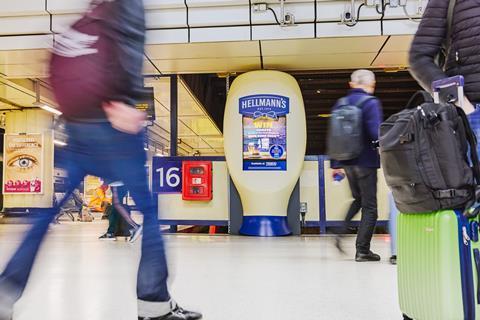
For retailers, selling ads on the channels they own – covering both online and in store – offers “robust margins” of 70% to 90%, according to research by Boston Consulting Group. For consumers, it means more personalised offers and targeted marketing. But what about for brands?
“For retailers, consumers and suppliers alike,” says David Sables, founder and CEO of Sentinel Management Consultants, “it’s a triple win.”
So, where is retail media up to in its evolution? And how can brands make the most of it?
Retail media is only now “coming of age”, says Nick Ashley, client development director of Tesco Media and Insight Platform. “It’s not the toddler some talk about. But it’s not an adult yet. It’s in its teenage years.”
Retail media by the numbers
$32.5bn
Q2 2024 global retail media spend
(WARC)
$36.9bn
Q2 2024 global linear TV spend
(WARC)
£283m
2023 UK retail media spend excluding Amazon
(IAB UK/PwC)
+12%
UK retail media spend growth versus 2022
(IAB UK/PwC)
1,800
Digital screens in Tesco stores (as of November)
6,000
Tesco digital screen count by year end
70%-90%
Retailer margin on retail media sales
(BCG)
£6.60
Return on ad spend with Tesco Media (versus £3.80 on other channels)
Sources: WARC, IAB UK, PwC, Tesco, Boston Consulting Group (BCG)
Supermarkets have long worked with brands on ‘shopper marketing’, and since the launch of loyalty schemes in the 1990s have been sharing data insights.
But over the past 18 months, tech-driven developments mean “retailer data can now be used to sharpen and improve the targeting of traditionally upper-funnel channels like connected TV, social media and digital out of home”, says Katie Streeter Hurle, chief strategy officer at SMG, which helps power the retail media networks of Asda, Co-op, Boots and Morrisons. “Additionally, retailers are investing in the development of their media propositions in store, which is making in-store retail media more dynamic, more compliant and able to be sold programmatically.”
Further, the first-party data supermarkets hold on customers is increasingly valuable. It gives them the ability to target very granular demographics based on their buying habits – particularly valuable to brands wanting to make their marketing buck work harder. And, like few other media channels, they can place advertising at the precise point customers are choosing which products to take from the shelf.
The dangers and weaknesses of retail media
While the promise of this plucky teen appears clear, however, the possibilities can easily overwhelm brands, says Sables. Before diving in, they need to be very clear on what they’re setting out to achieve.
“Do they want to drive trial and awareness? Are they committed to incentivising consumers to buy more products or bigger sizes? Do they want to persuade consumers to buy one product versus another?” says Sables. “With clarity on the who, the what and the why, it becomes easier to choose and use the best marketing tool to reach the highest number of consumers in the most cost-effective way. If retail media can achieve this at a lower cost than other forms of traditional marketing, then they have no choice but to select it.”
Brands also need a solid understanding of the return on investment at play, of course, to be able to pick the right media network for them. That’s not always easy.
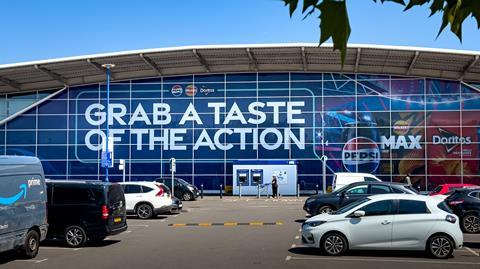
With the supermarkets working hard to woo suppliers, brands “are being met with waves of compelling, apparently no-brainer, investment opportunities”, Sables says. Further, the various networks “have significant innovation pipelines at the moment, meaning they’re bringing new media and data offers to market faster than we’ve ever seen before”, adds Streeter Hurle.
To assess each, marketing directors should be “making sure they have a retail media measurement strategy in place, to compare activations across platforms consistently and quickly to allow them to redirect investment to the most effective places”, Streeter Hurle says, as well as “building a test-and-learn plan where they can dedicate budget to trials and pilots”.
“The reality is that some retail media channels will work in certain categories, for certain missions or objectives, but not all,” she adds. “It’s a good time now to be intentional about experimentation.”
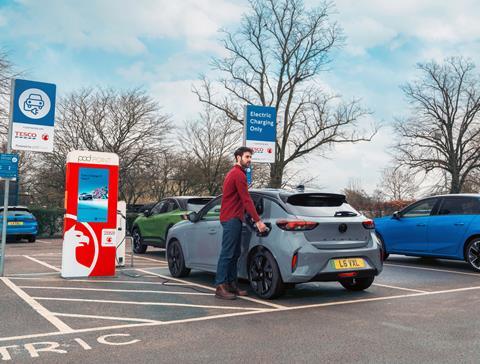
A soon-to-be-published report by IAB identified this lack of consistent, comparable standards as the biggest roadblock for retail media buyers.
“The explosive growth of retail media has created a scattered landscape,” says IAB Europe insights director Marie-Clare Puffett. “Brands waste valuable time analysing and normalising results across different platforms, hindering strategic planning and decision-making.”
More well-trodden channels like paid-search and social media at least “offer scale and consistency”, she adds. For retail media, “reaching projected growth hinges on simplifying and unifying measurement across platforms”.
Read more:
-
Sainsbury’s to upskill brands on the ‘power’ of retail media networks
-
Loyalty prices preferred to vouchers and price-matching and more loyalty insights
-
Does retail media spell the end for the gondola end?
-
Can Tesco take Clubcard personalisation to new heights?
IAB Europe is working towards standardised metrics to enable “consistent comparisons” across retail media investments for buyers, initially covering online media but eventually in-store. The first version was published in April. Tools are emerging, too, to help advertisers assess retail media opportunities – among them SMG’s Plan-Apps, which is used by the likes of PepsiCo, Diageo, AB InBev, Mondelez and CCEP.
“Ultimately, their decisions have to be based on ROI and the choices sorted accordingly,” says Sables. “It may not always be easy to assess the ROI of each retailer’s services, but it has to be the right way to make the final call between them.”
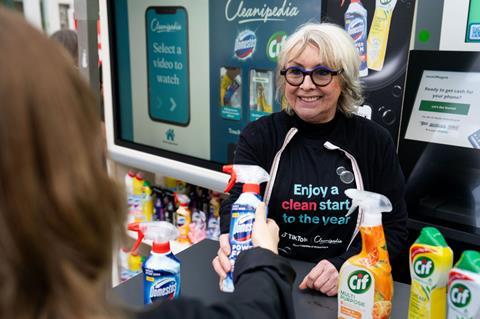
SG Retail director and former Dunnhumby MD Steve Gray, however, believes bigger CPGs “must advertise on all of them – wherever their brand is sold”. That seems to be an increasingly common approach, with McKinsey research finding advertisers to be splitting their spend across an average of four networks, while 27% have shifted spend from one network to another in the past 12 months. The decision-making comes in investing “where they get the highest growth”, but in any case, all should be “switching monies away from Facebook and Google towards those retailers with advanced retail media networks”.
At the same time, “if you measure these activations purely through a short-term ROI lens, you’ll likely not be taking into account the true effects of the activity”, says Streeter Hurle. Retail media can also be effective in achieving longer-term brand-building impact, despite being historically considered a “lower-funnel, conversion-driving channel”, she argues. “I don’t believe that to be the case today.”
Who’s selling to whom?
Much of the work involved in fully exploiting retail media opportunities is internal. The rapid rise of retail media has created “quite a few grey areas between the various teams involved”, says AG Barr shopper marketing controller Catherine McGarry. Since the different channels have different results on different metrics – be it awareness, conversion or sales – “it’s often confusing who should be responsible for which part”.
“It can be like herding cats, but that’s what makes it worthwhile when it does work,” she adds.
The traditional split between sales and commercial, marketing, shopper marketing and e-commerce teams, then, may no longer be fit for purpose.
“The organisation piece should never be forgotten,” Sables says. Both sides of the table “are learning and developing skills on a daily basis”.
“There’s no MBA programme to guide suppliers on how to use retail media, but there is an evolving body of experience across multiple sectors that can indicate its efficacy and ROI,” he adds. “The suppliers that are fit for purpose will have some dedicated talent working on what their company knows, what they need to know and how to make decisions on their investment.”
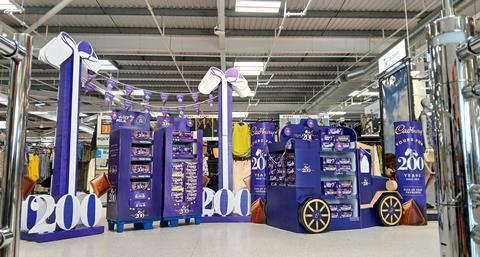
Just as brands are grappling with the new world of retail media, so are supermarkets. And this represents a big opportunity for suppliers. In many ways the retailer/supplier relationship has been turned on its head. The seller becomes the buyer and vice versa.
Brands “must be more demanding of retailer execution and pricing”, says Gray. “When brands buy retail media they must act like buyers and ensure they get value for money and get what they pay for. Some are starting to bring their procurement teams to the table – quite the role reversal.”
The launches of slickly branded retail media networks by the supermarkets shows they’re “upping their game” for this “reversed dynamic”, which sees them become the “selling organisation”, Gray says. Streeter Hurle agrees: “Retailers are playing a new role today, as serious and sophisticated media businesses.”
Given retail media is taking much more of their ad spend, many of the biggest brands are fronting negotiations with their marketing budget owners, who “tend to have a lot more organisational clout than shopper marketing managers” and “are expecting similar standards and the same ways of working that they would expect from ITV, Google or Meta”, Gray says.
“It creates organisational tension both for retailers and suppliers. The winners will be those who manage these dynamics most successfully.”

As well as tension, the new dynamic is sparking a wave of creative collaboration. Supermarkets are open-eared to ambitious campaigns.
As Matt McLellan, Asda VP customer planning & propositions, leading its new LS Eleven Media Services, told suppliers recently: “If you’re a brand that wants to do something different, we are really up for it.”
“It’s now a much more collaborative experience between the parties,” says McGarry.
Ultimately, retail media is proving a boon for the brands that can handle it right. Already, nearly 70% of advertisers surveyed by McKinsey say their performance in retail media is significantly or somewhat better than in other channels.
“Retail media is great news for suppliers, but only if they have the right objectives, the right organisation and the right ways of working,” says Sables. “If any of these are missing, retail media can be a minefield of missed opportunities, risks and mind-numbing confusion!”







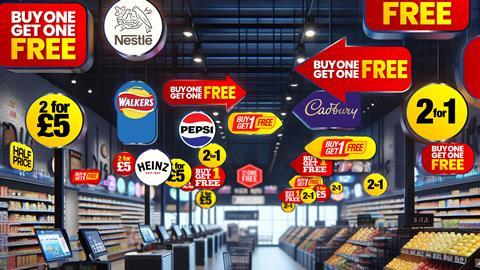





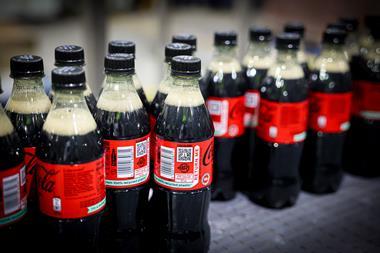











No comments yet